The fighting in the Pacific Theater during the Second World War showed the might of the US Navy. Among those to distinguish themselves was the USS Salt Lake City (CL-25), a heavy cruiser that saw action in the conflict’s major naval campaigns. As with many of the vessels that participated in World War II, she met her end with the nuclear weapons tests conducted under Operation Crossroads.
Development of the USS Salt Lake City (CL-25)
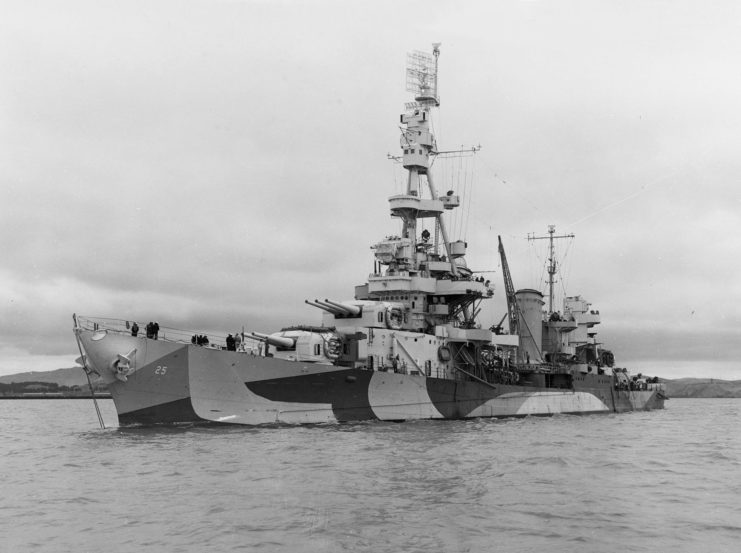
The USS Salt Lake City was laid down by the American Brown Boveri Electric Company in Camden, New Jersey in June 1927. Launched two years later and commissioned in December 1929, she was the second of two Pensacola-class heavy cruisers to be constructed for the US Navy.
Salt Lake City had a displacement of 9,100 long tons, and could hold a crew of 87 officers and 576 enlisted men. She was powered by 12 White-Forster boilers and four Parsons reduction stream turbines, which afforded her a range of 10,000 nautical miles and an average speed of 37.6 MPH. She also featured two amidship catapults and room for four floatplanes.
When initially commissioned under the command of Capt. Frederick Lansing Oliver, Salt Lake City‘s armament was made up of six torpedo tubes; 10 eight-inch .55-caliber guns; two QF three-pounder Hotchkisses; and four five-inch .25-caliber anti-aircraft guns.
This was later updated to include the addition of four 1.1-inch .75-caliber anti-aircraft guns and eight Oerlikon 20 mm cannons in 1942, and six quad Bofors 40 mm Automatic Gun L/60s three years later. The number of 20 mm cannons was also increased to 19 during this time.
Early service during the interwar period
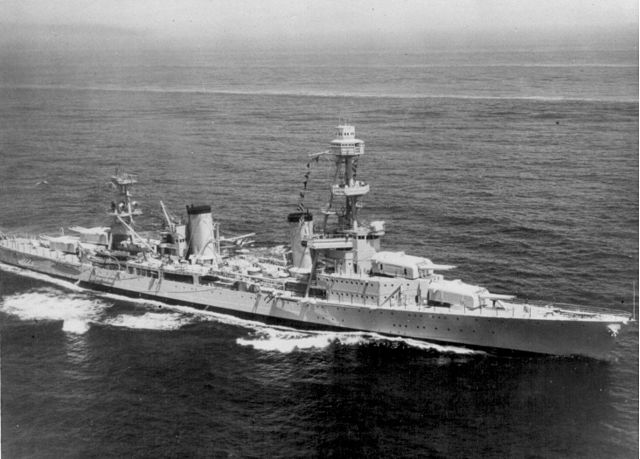
For the first two years of her service, the USS Salt Lake City operated in the Atlantic Ocean. In January 1930, she departed from Philadelphia, Pennsylvania for shakedown trials off the coast of Maine, and two months later joined Cruiser Division 2 (CruDiv2) of the Scouting Force. That September, she was reassigned to Cruiser Division 5 (CruDiv 5).
Originally designated CL-25, Salt Lake City was re-designated CA-25 in July 1931, in accordance with the London Naval Treaty. A year later, she was assigned to the Pacific Fleet, before undergoing an overhaul at the Puget Sound Naval Shipyard in Washington State. Following this, she rejoined CruDiv4.
Up until the Japanese attack on Pearl Harbor on December 7, 1941, the heavy cruiser conducted various cruises throughout the Pacific Ocean.
Early actions in the Pacific following America’s entry into the war
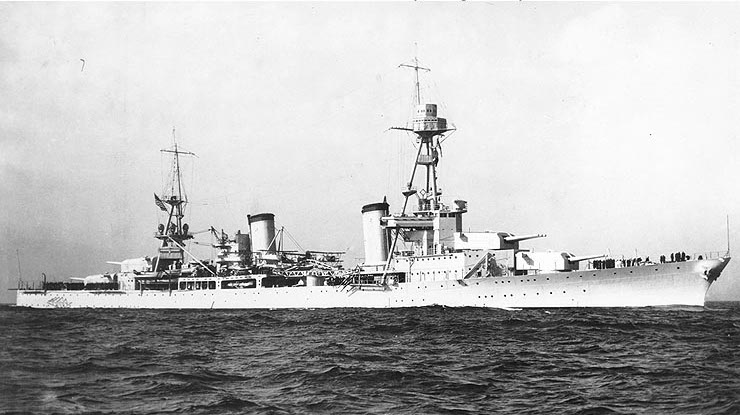
Following the attack on Pearl Harbor, the USS Salt Lake City, reassigned to the Enterprise Task Group (Task Force 16), operated around the Hawaiian Islands, after which they were tasked with relieving those fighting near Wake Island. When the region fell to the Japanese, the group was transferred to Midway, followed by Samoa.
In February 1942, the Enterprise Task Group carried out a number of air strikes over the eastern Marshall Islands, in an attempt to reduce enemy air bases. Salt Lake City came under attack during this time, but still managed to assist in the downing of two Japanese aircraft. This was followed by additional air strikes over Marcus Island.
In April of that year, Salt Lake City escorted Task Force (TF) 16 as it prepared to launch the Doolittle Raid on Tokyo and other major Japanese cities. She was then returned to Pearl Harbor, where preparations were made for her to participate in the Battle of Midway, during which she provided rear guard protection.
From August to October 1942, the heavy cruiser was tasked with escorting the USS Wasp (CV-7) during the American landings of the Guadalcanal Campaign. When the latter was sunk by a Japanese submarine, Salt Lake City assisted in the rescue of her crew.
Battle of Cape Esperance
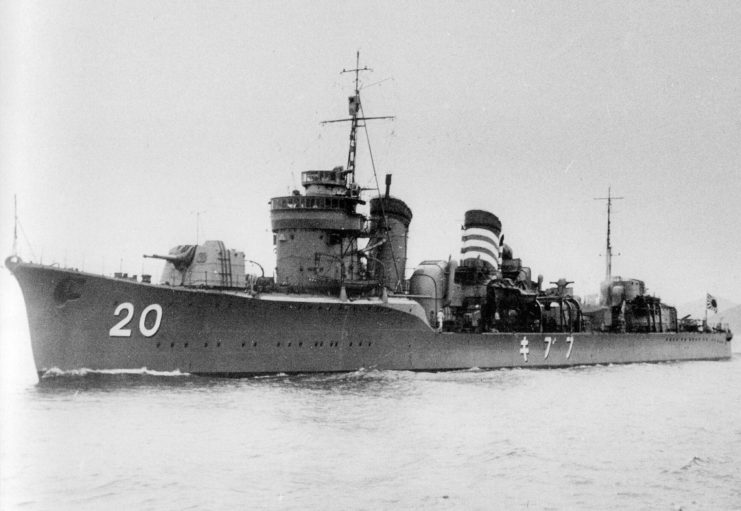
Prior to the Battle of Cape Esperance on October 11-12, 1942, the USS Salt Lake City formed Task Force (TF) 64, along with the USS Boise (CL-47), San Francisco (CA-38) and Helena (CL-50). The group of ships was tasked with attacking the “Tokyo Express,” the name given by the Allies to the Imperial Japanese Navy (IJN) vessels that conducted resupply missions at night.
During the mission, an aircraft aboard Salt Lake City caught fire, alerting the Japanese to TF 64’s position. However, what was initially seen as a nail in the coffin for the American vessels turned out to be a blessing in disguise, as the IJN ships believed the fire to be coming from the landing force they’d been sent to protect. It wasn’t until they were in the midst of a firefight with the Americans that they realized who they were dealing with.
During the engagement, TF 64 was able to sink the Japanese destroyer Fubuki (1927) and cruiser Furutaka, while inflicting damage on the cruisers Aoba and Kinugasa. Salt Lake City suffered three major hits from the enemy vessels, prompting the heavy cruiser to return to Pearl Harbor for four months of repairs.
Battle of the Komandorski Islands

Traveling north as part of the Aleutian Islands Campaign, the USS Salt Lake City soon found herself operating with Task Force (TF) 8, alongside the USS Richmond (CL-9) and four destroyers.
On March 26, 1943, TF 8 made contact with a group of Japanese transports that were being escorted by a number of destroyers, the heavy cruisers Nachi and Maya, and the light cruisers Abukuma and Tama. Despite being outnumbered and outgunned, TF 8 believed it could easily take on the enemy vessels.
Almost immediately, Salt Lake City received the most attention, suffering hits to her amidships and forward compartments, resulting in a loss of power. To draw fire away from the damaged vessel, the American destroyers charged at the Japanese cruisers. Eventually, the enemy vessels withdrew from the engagement, having intercepted demands for air support by TF 8. The sailors had also mistaken the use of high explosive (HE) shells to be air-dropped bombs.
Despite the odds, the American ships managed to prevent the Japanese from reinforcing their bases in the Aleutians, something Salt Lake City would continue to support with the liberation of Attu and Kiska.
USS Salt Lake City (CA-25) and the final stages of World War II
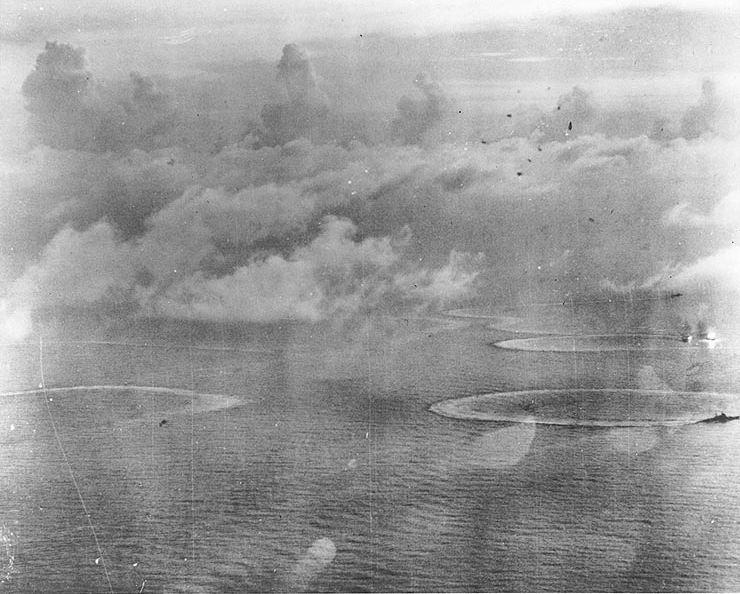
Following the Aleutian Islands Campaign, the USS Salt Lake City was assigned to Task Group (TG) 50.3 of the Southern Carrier Group, with whom she fought in the Gilbert Islands Campaign. She was later attached to the Neutralization Group (TG 50.5) during the Marshall Islands Campaign, later taking part in raids on Ulithi, Palau, Woleai and Yap in the western Caroline Islands archipelago.
In October 1944, Salt Lake City took part in the Second Battle of the Philippine Sea, tasked with screen and support duty. This was followed by a transfer to the Gunfire and Covering Force (Task Force 54), which participated in the battles of Iwo Jima and Okinawa.
Originally ordered to report to Commander, 3rd Fleet for deactivation in October 1945, the heavy cruiser was diverted to Operation Magic Carpet, to aid in the return of servicemen from the Pacific Theater.
Over the course of the Second World War, Salt Lake City received 11 battle stars and the Navy Unit Commendation. She was also given the unofficial distinction of having taken part in more engagements than any other ship in the American fleet.
Operation Crossroads
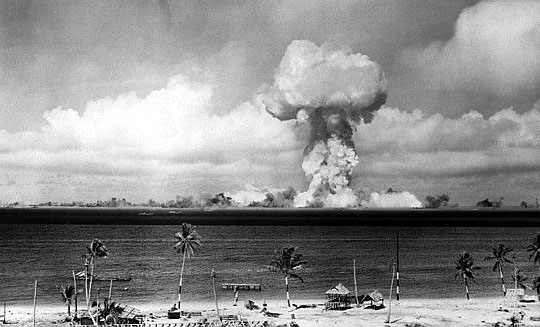
Like a number of vessels that served in the Pacific Theater during the Second World War, the USS Salt Lake City was tapped to participate in Operation Crossroads at Bikini Atoll. Along with the likes of the USS Pensacola (CA-24), Nevada (BB-36), Independence (CVL-22), Saratoga (CV-3) and Arkansas (BB-33), the heavy cruiser was a target of atomic bombs deployed by the US Army.
Salt Lake City was used to evaluate the effects of two different kinds of strikes. On July 1, 1946, an atomic bomb was dropped on her to assess the effects on surface vessels, while a second test toward the end of the month evaluated the effects of a subsurface explosion.
Decommissioning of the USS Salt Lake City (CA-25)

Are you a fan of all things ships and submarines? If so, subscribe to our Daily Warships newsletter!
On August 29, 1946, after surviving the nuclear testing of Operation Crossroads, the USS Salt Lake City was decommissioned. She waited just under two years to meet her ultimate fate, with the US Navy using the retired heavy cruiser as a target hull on May 25, 1948. Less than a month later, Salt Lake City was stricken from the Naval Vessel Register.
